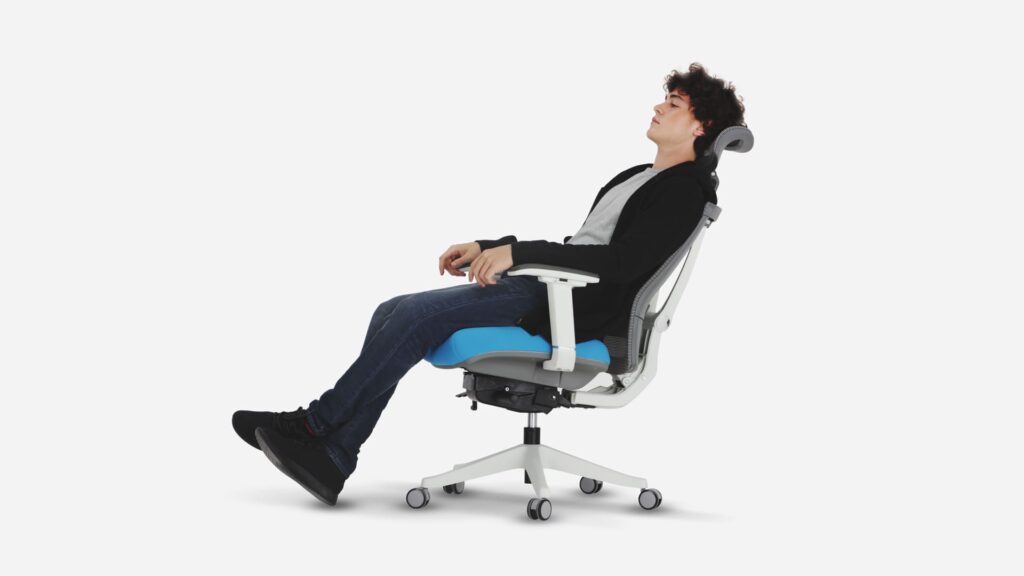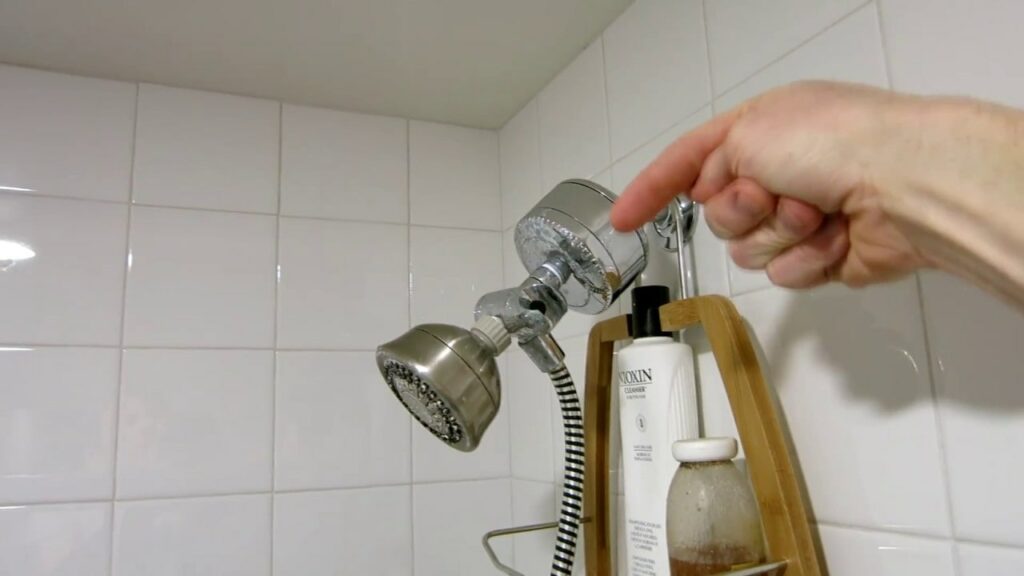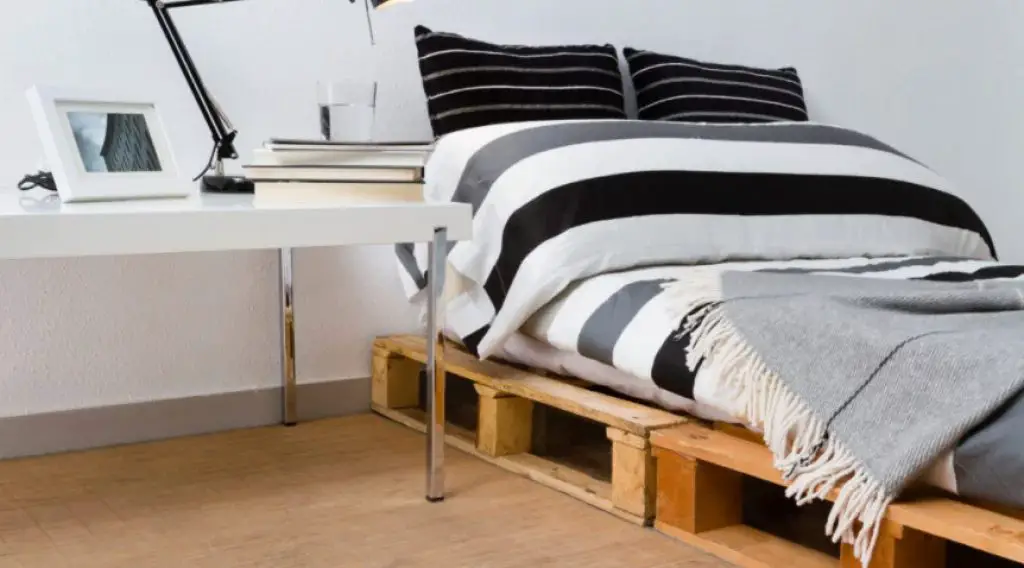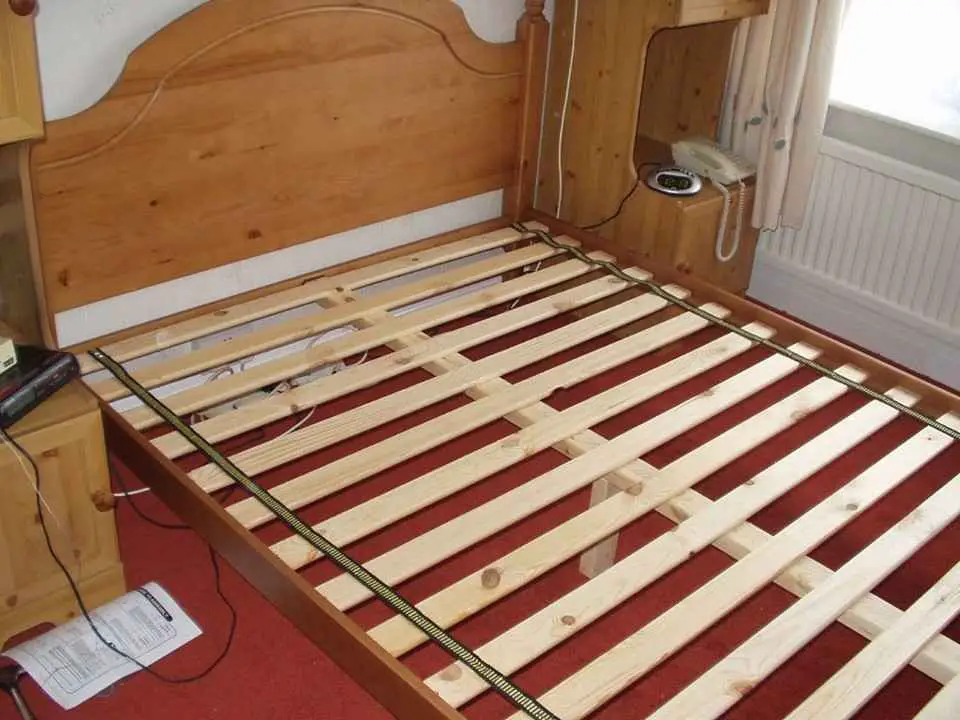So, you’ve chosen to sleep in your chair instead of sitting down?
Have you ever tried lying on the ground to sleep? If you can make your chair as comfortable, you can sleep soundly in it.
You may need to practice sitting up straight on a chair, but you will still be able to obtain a restful night’s sleep.
To sleep peacefully in a chair, you must provide it with a blanket and pillows.
A scarf tied around your head and attached to the back of your chair will add additional support.
Add another pillow if further neck support is required and sleep upright.
Whatever your motives, this article will assist you in achieving your aim of getting some Z’s while sitting!
Why You may wish to Sleep Sitting in Your Chair?
There are just two common reasons to think about sleeping vertically given that humans are essentially designed to do so (more on that later) as follows:
- A distaste of the floor coupled with a lack of a bed, whether temporary or permanent.
- A health problem, which could potentially be chronic or transitory.
Nobody will look down on you if you don’t have a bed, but you should buy one for yourself.
I assure you that a chair and the floor are both inferior.
Despite the humour, few people would choose to be in this circumstance. Maybe you just moved and are awaiting the delivery of your bed.
Or perhaps the old one broke down, temporarily leaving you at the mercy of the delivery service? It’s okay if you don’t want to sleep on the floor; a cozy chair will serve for now.
If your motives are medical in nature, the situation gets considerably more serious.
Perhaps you have congestion that prevents you from breathing while you’re lying down due to allergy or cold symptoms.
Gravity will remove a significant amount of mucus from your nose and throat if you sleep sitting on chair.
As a result, breathing will be much simpler for you, however, it can cost something.

Why Sleeping in Your Chair is so Difficult?
You don’t need to be concerned about sleeping on a chair or whether it’s unhealthy to sleep upright.
The bodily cues and signals that let you know when it’s time to get up or go back to sleep while you’re sleeping.
Some sorts of discomfort can be avoided when your brain recognizes that you are rested even while your muscles aren’t entirely under control.
The only issue is that you lack a recliner chair to allow you to take a relaxing snooze.
Additionally, because your body isn’t naturally stretched out, your back and neck can still hurt the next morning.
Your lower back will be harmed if you sit at a standing desk with your head resting on the table and your back bent at a 90-degree angle.
After some time spent sitting, your legs may begin to feel numb.
Some office workers prefer to take shorter breaks or naps while sitting in their chairs, but they rarely get enough sleep to be productive.
How to Sleep While Sitting on Chair?
Preparing to Sleep Sitting up:
Make your bed. Before attempting to sleep upright, gather your bedding, including a blanket, pillows, towel, or mat, if you have time to do so.
You’ll feel comfier and less sore from sleeping upright with this bedding.
Furthermore, it will be simpler to fall asleep while sitting up if you are wearing flexible, comfortable clothing and light shoes.
Your head and neck can be supported by a specific travel pillow.
These can be worn in a variety of ways, including over the neck, over the shoulder, attached to the side of a chair, and in numerous positions.
Look for these cushions in airport shops, luggage stores, etc.
Collect sleeping remedies:

Some people discover that blocking out distractions and/or outside noise with earplugs or headphones makes it simpler for them to fall asleep.
A lot of folks also find that using an eye mask to filter out light is helpful.
Try to keep any additional items that are a part of your bedtime routine nearby, such as a book to read or a mug of tea.
You’ll be more likely to fall asleep sitting up if you keep your sleep schedule as regular as possible.
Choose a place to sleep:

You can take advantage of the situation and sleep on a chair sitting if you’re in one, such as on an airplane or train.
However, if you have the freedom to roam and choose a spot to sleep, try to find a vertical object to lean against, like a wall, fence, or post. You might also lean against something with a board or other flat surface if you have one.
The ideal surface has a modest rearward slope.
When trying to fall asleep while sitting up, the softness of a chair, recliner, or couch may be more pleasant than a hard surface like a wall.
To make it more comfortable, though, if all you have is a hard surface, use pillows and blankets as padding.
Adjust your position:

When attempting to sleep upright, it is advised to lean back at an angle of around 40 degrees. A seat on an aircraft, train, bus, etc. might tilt back a little bit.
A recliner armchair is a good choice if you can find one if you’re somewhere else. Otherwise, simply lean at a modest angle against a surface.
Make your sleeping area cosier:

You should use the bedding you got to make things more pleasant if you aren’t sleeping on a chair or other cushioned surface.
You could discover that adding a blanket and pillow makes you feel more comfortable, even if your location is already cushioned.
Lay a mat, cushion, or blanket on the ground or other surface directly beneath you.
Put some padding behind you, such as a blanket, pillow, or cushion. Your back will be supported by this.
Place a small pillow or rolled-up blanket behind you on your lower back.
This will provide more support for your lumbar region, reducing pain.
Put a small pillow behind your neck. As a result, you’ll be able to tilt your head slightly backward, which could make you fall asleep.
Although specialized neck pillows are designed for this function, you can make do with anything you have.
Try to simulate your usual sleeping schedule.
You can use whichever method helps you unwind and fall asleep to read a book or listen to music.
This method can assist you in falling asleep normally even while you are sitting up.
In fact, according to sleep medicine and psychiatry expert chamomile or valerian tea can help you sleep for a little bit longer.
Adjust as necessary to maintain comfort:

Sitting up while you sleep can make it easier to get comfortable and promote better sleep.
Stretching your legs slightly apart will help you to get back to sleep if you wake up while attempting to go to sleep (for example, turn your head or shift your body slightly to one side).
If necessary, add more support for your head:

It’s crucial to keep your head in a cozy position if you want to stay asleep.
Move your support (cushion, blanket, etc.) to the side if your head starts to drift to one side to offer it greater stability.
If your support (a chair, a post, etc.) keeps drooping, you may also be able to wrap a scarf around both your head and the support’s back, if that is possible.
This aids in keeping your head in place so that you may sleep longer.
Get more rest as soon as possible:

When you have no other option and need to take a quick nap, sleeping upright is usually OK. While sitting up, it might be challenging to get the “active,” REM sleep your body requires.
Get deeper rest as soon as you can in a cosier setting, like a bed, couch, or hammock.
Tips to Comfortably Sleep in Your Chair:
There’s more to obtaining a good night’s sleep in a chair than simply sitting in one and shutting your brain out, as you’ve probably noticed by this point.
For instance, you’ll probably need pillows if your chair doesn’t slope backward.
They should be positioned behind your posterior so that your back can slightly bend rearward. Once REM begins, you’ll find it much simpler to stay asleep if you do it that way.
Of course, if you need to sleep upright for medical reasons, you will also want a blanket to cover yourself with.
Even if you don’t feel chilly at first, after you start to drift away, you probably will.
If you absolutely don’t want a conventional blanket, you might also find a compromise.
Always elevate your feet a little bit, especially if your seat’s surface area has been diminished by the pillows.
Along with increasing your comfort, doing this will greatly reduce the likelihood that you’ll start falling off the chair as you sleep. You’ll almost certainly wake up if that occurs.
For a variety of reasons, purchasing a good travel pillow is strongly advised. When your neck relaxes after dozing off in a chair, that’s when you’ll usually wake up.
A travel pillow will lessen the tension on your neck as well as assist in preventing that from happening. This abuse wasn’t intended for it.
Even while they are tremendously helpful, some folks simply need more than a travel pillow.
You might think about draping a scarf around your forehead and the pillow portion of your chair, as this person does if you discover that it doesn’t provide your neck with enough support.
Although it may seem absurd, it actually works.
Drawbacks of Chair Sleeping:
The key is that you can arrange everything, become accustomed to it, and even begin to value it in the short term.
You might entirely substitute vertical rest for horizontal rest, which could result in long-term, major health consequences.
First of all, this whole situation will be difficult for those who suffer from chronic neck pain.
Taking safety measures and purchasing a travel pillow will be beneficial, but don’t be shocked if your symptoms continue to worsen.
Furthermore, even if you have never experienced neck pain before, it’s possible that you may now. Furthermore, you should avoid tampering with your neck.
Even if you do raise your legs, you still face the danger of having less blood flow. Anyone can tell you that having fluids build up in your legs is never a good moment.
You ought to remain as active as you can be throughout the day to avoid this potential difficulty.
Third, there’s a potential that you occasionally only get shallow sleep even though you’re no longer waking up suddenly.
This may be the reason why you get irritable during the day and have sore muscles all the time.
While you’re sleeping, your body needs to stretch and unwind. You shouldn’t deny that need for a prolonged period of time.
Other Considerations for Sleeping in Your Chair:
- To prevent neck pain during side sleeping, keep your head elevated (just make sure you use something as a pillow).
- Avoid resting as much as possible on regular dining or workplace chairs that aren’t ergonomic.
- Use a headrest- and footrest-equipped recliner.
- If you don’t have a reclining chair, add a headrest, neck cushion, and pillow for your lower back.
- Don’t oversleep; set the alarm!
Also read: Why Do I Fall Asleep When Reading or Watching TV?
FAQ- How to Sleep Sitting in a Chair?
Q1. Is it ok to spend each night in a chair?
Sleeping in a chair for brief amounts of time will have no long-term or major consequences on your body.
However, long-term use of a chair as a bed might cause knee and hip contractures.
Your muscles may contract around your joints as a result, which could impair your ability to stand or sit up straight.
Q2. Is it true that sitting up in a chair makes you sleep worse?
Sleeping regularly in an ergonomic chair has a harmful impact on the heart.
People who drive home from work and spend hours in a white ergonomic chair are at an increased risk of developing blood clots in their hearts.
When you sit for a long period, blood builds up in your legs, putting pressure on the arteries in your legs, which in turn puts pressure on your heart.
Q3. Why do I sleep better while sitting up?
Improved digestion is another advantage of sleeping in a recliner.
When you’re sleeping on a mattress or bed, you can twist and curl while you’re asleep, which can impact digestion.
Decomposition procedures are therefore easy when your body is resting while sleeping on a fully reclined modern ergonomic chair.
Also read: How to Sit Up in Bed Comfortably?
Conclusion:
In conclusion, sleep while sitting on chair is totally possible and depending on your situation.
However, a decent bed is usually preferable unless you absolutely must travel vertically to La-La Land.
Be careful not to assume that simply because you can, you should.
Afterward, if you should, please feel free to take action.
If you are forced to make this choice, the advice I’ve given should at the very least, make things simpler for you.










